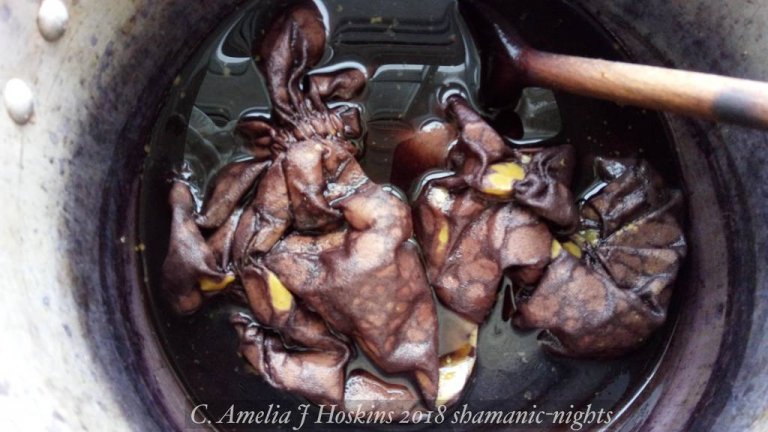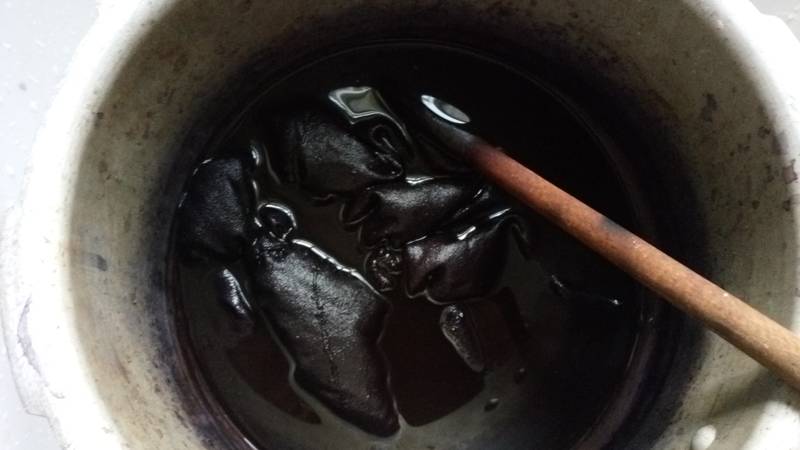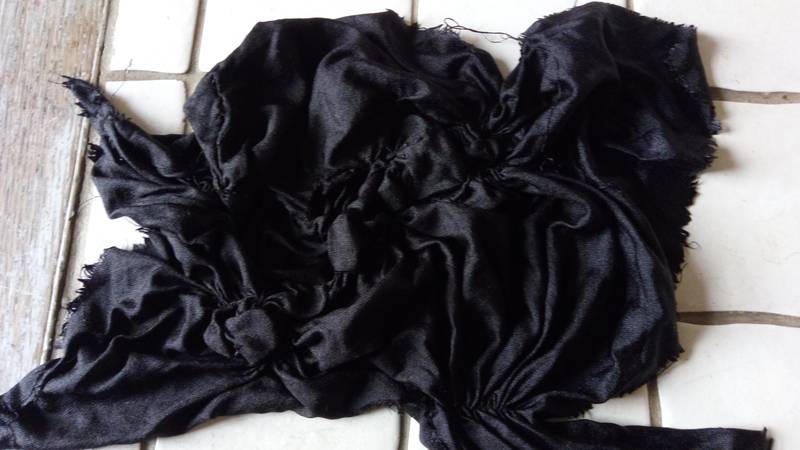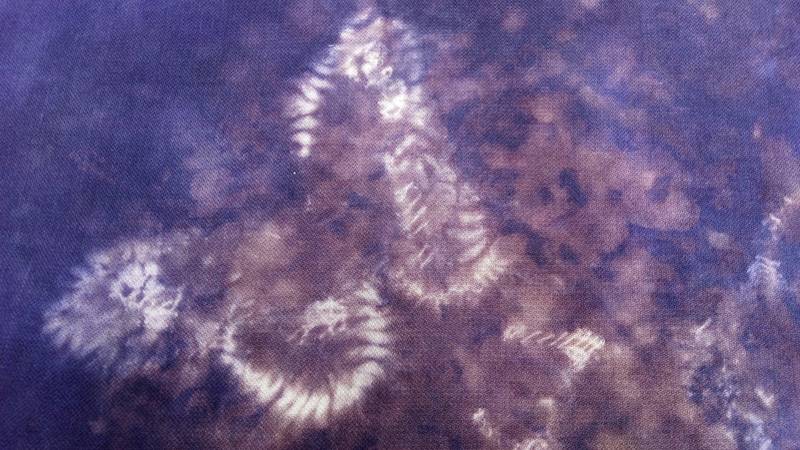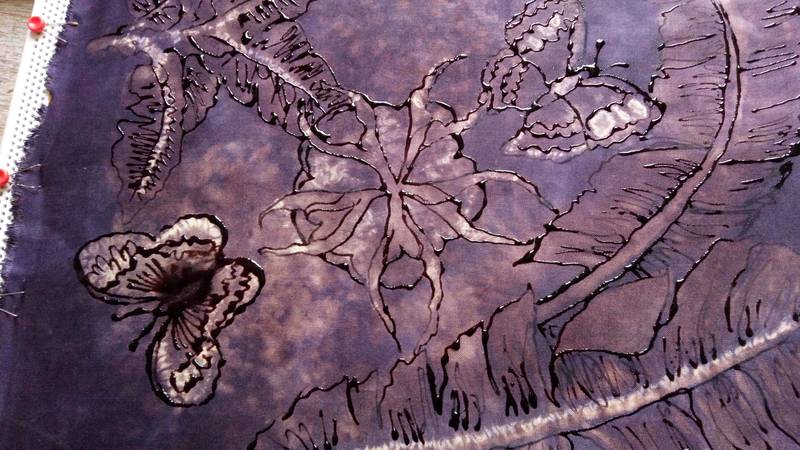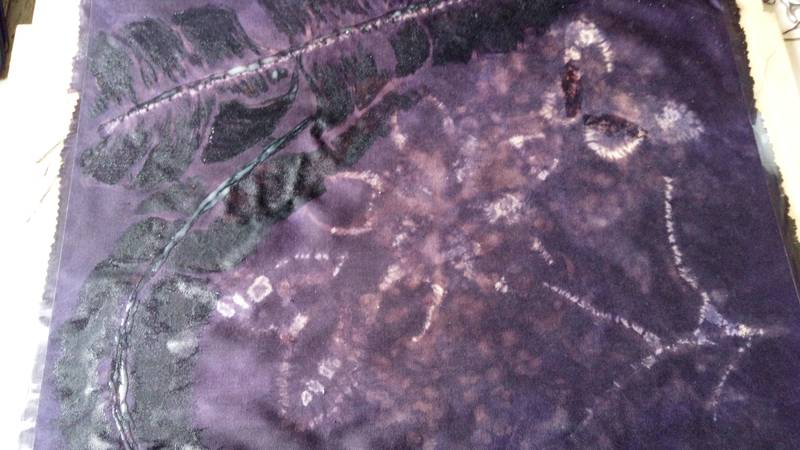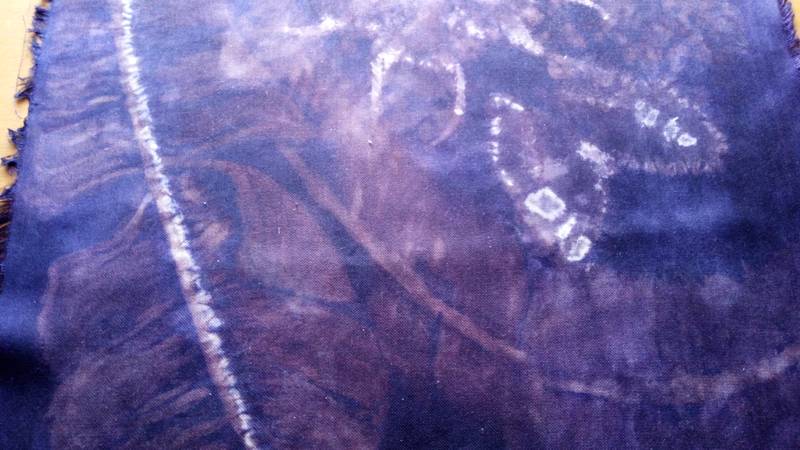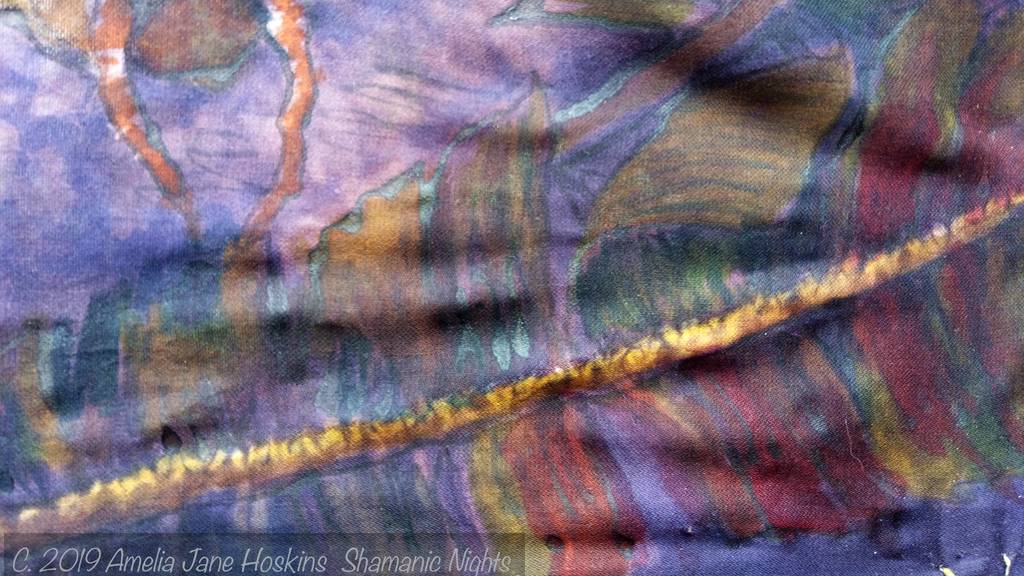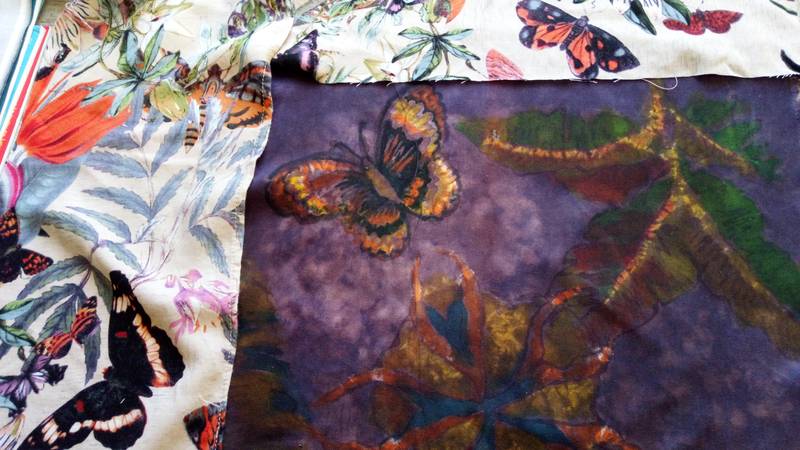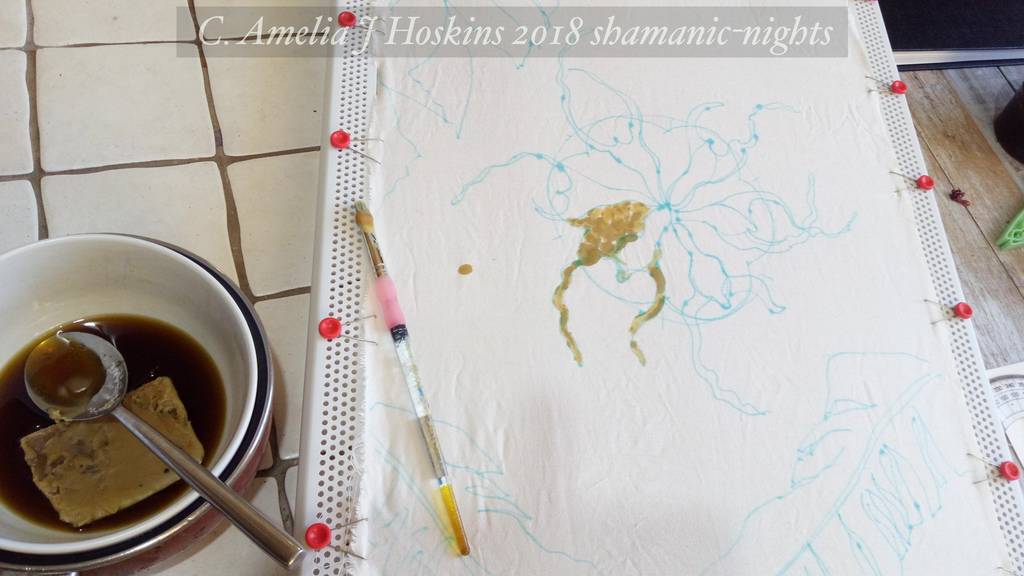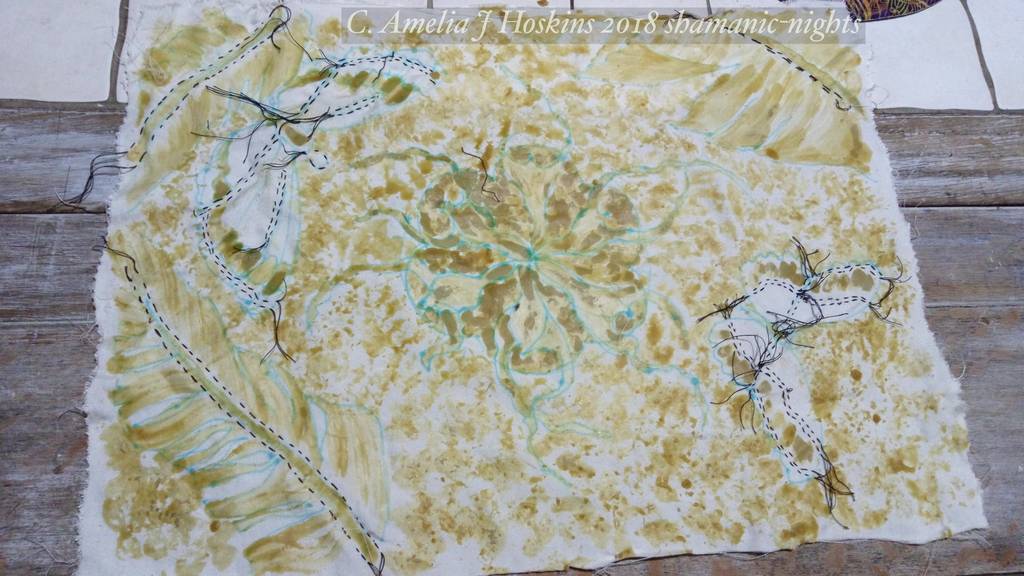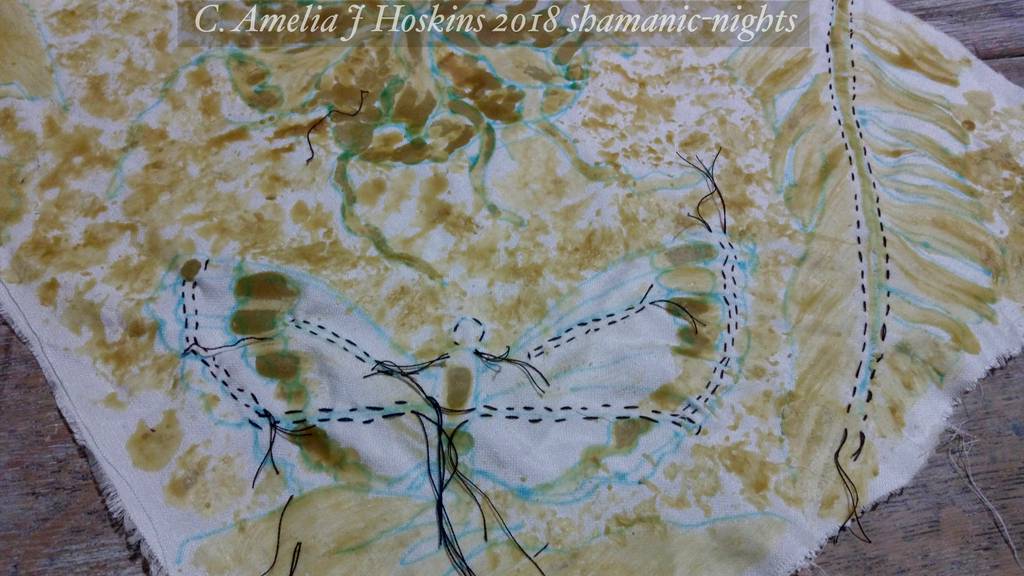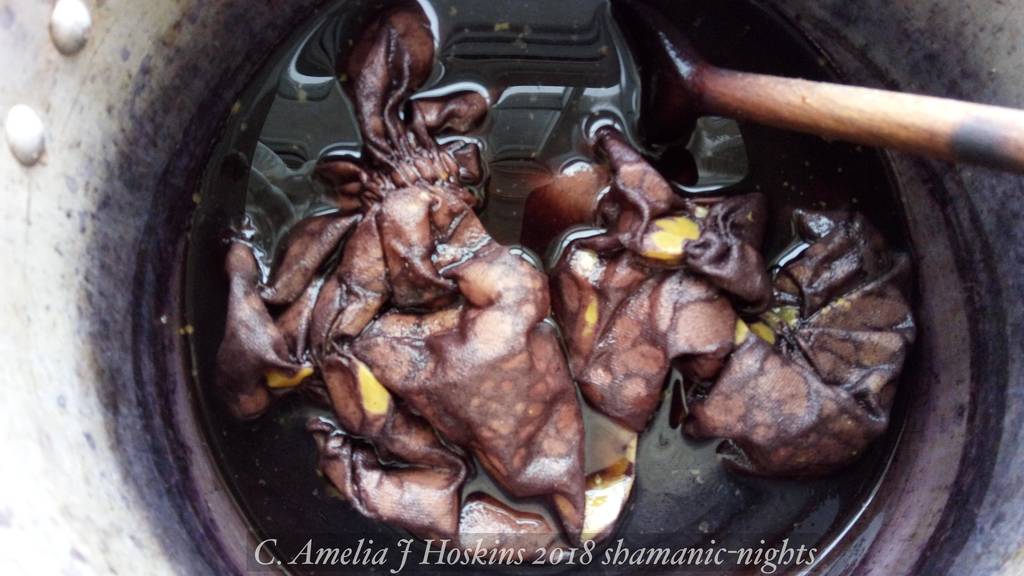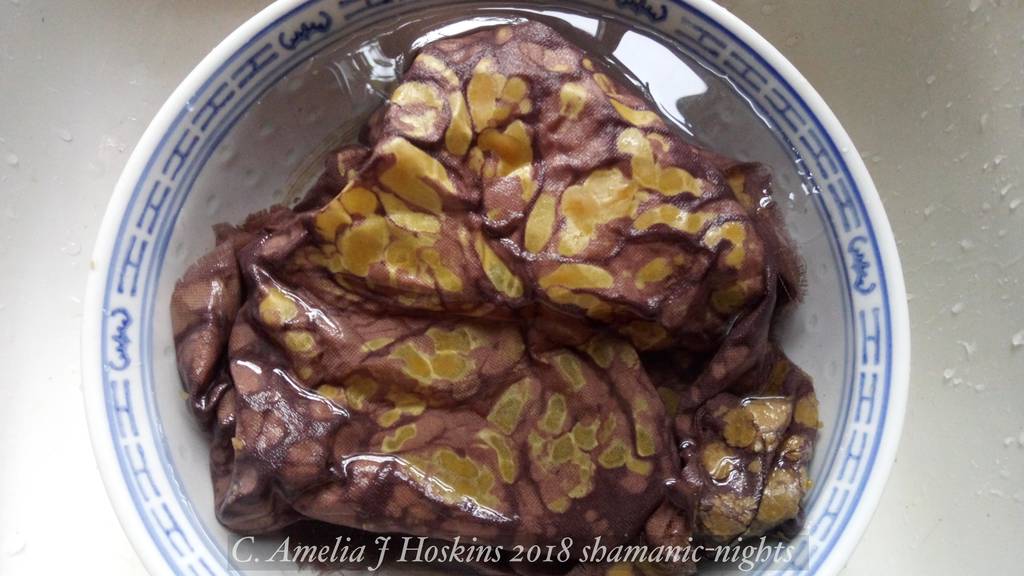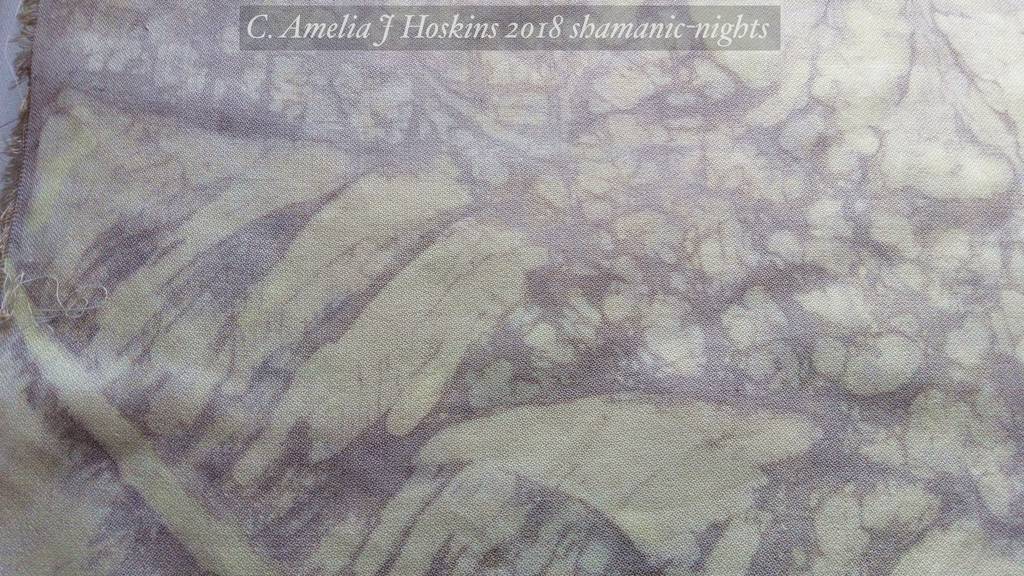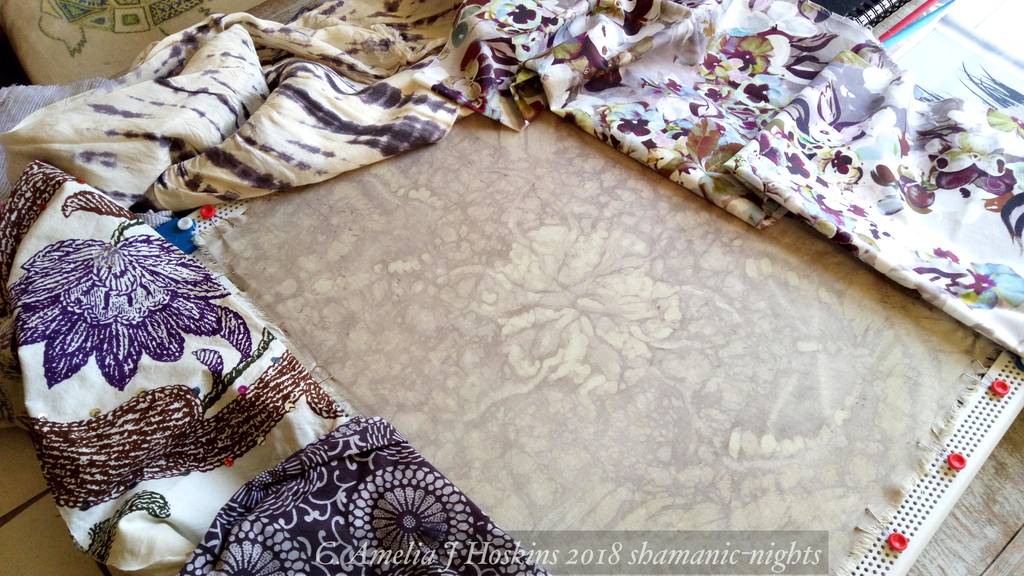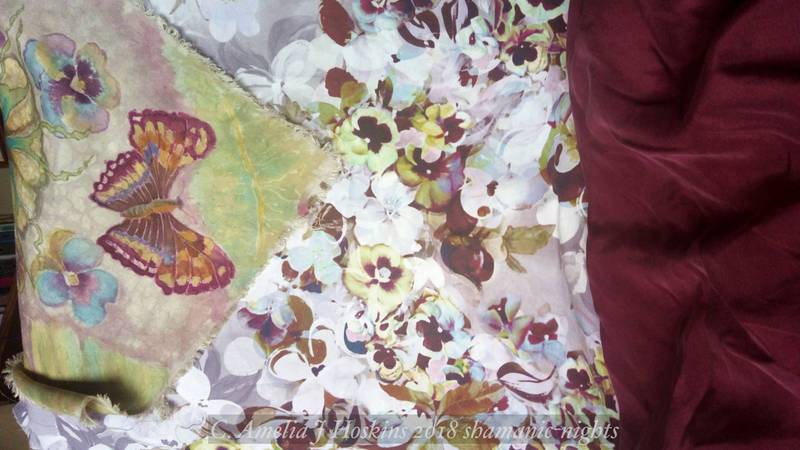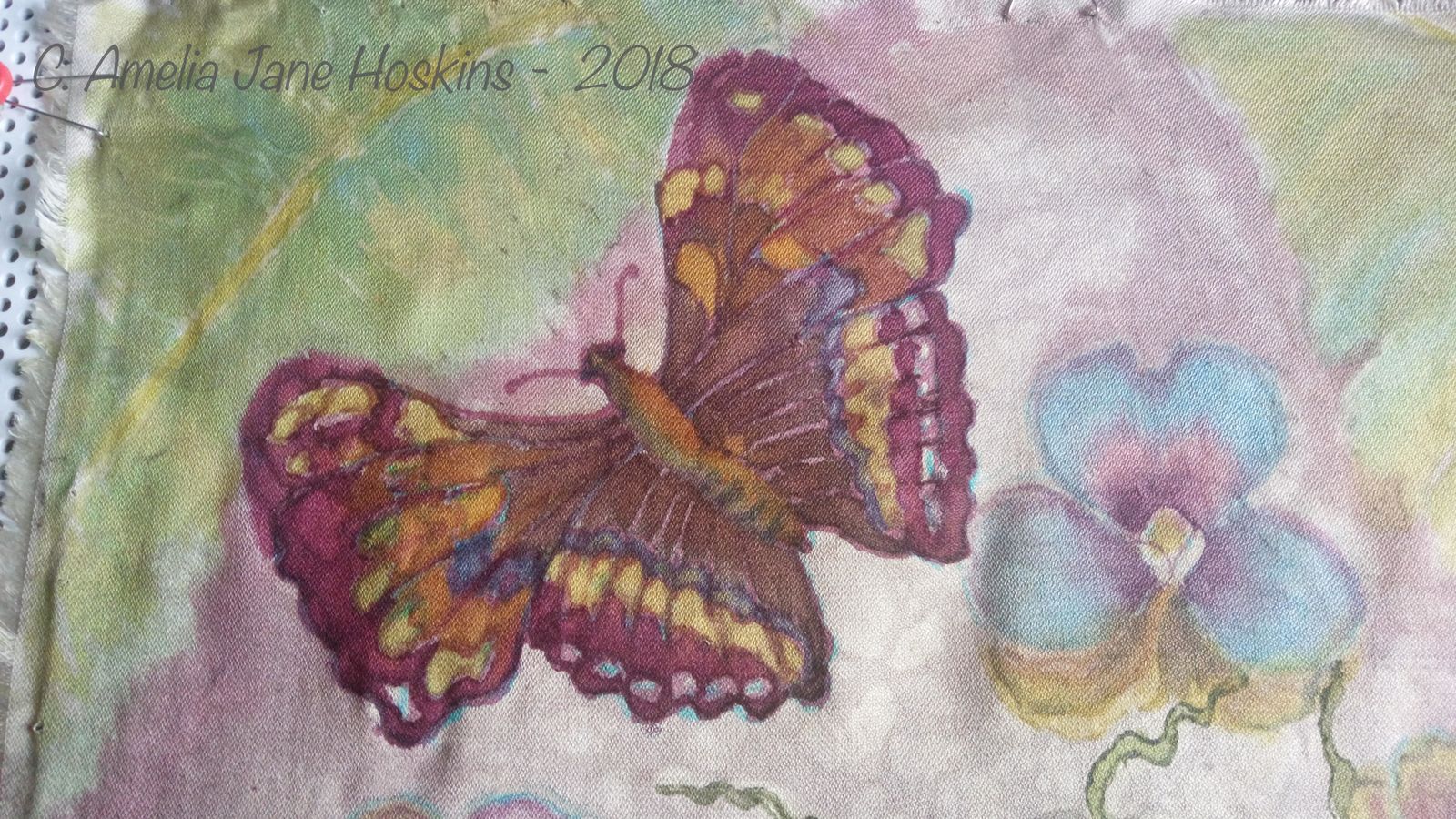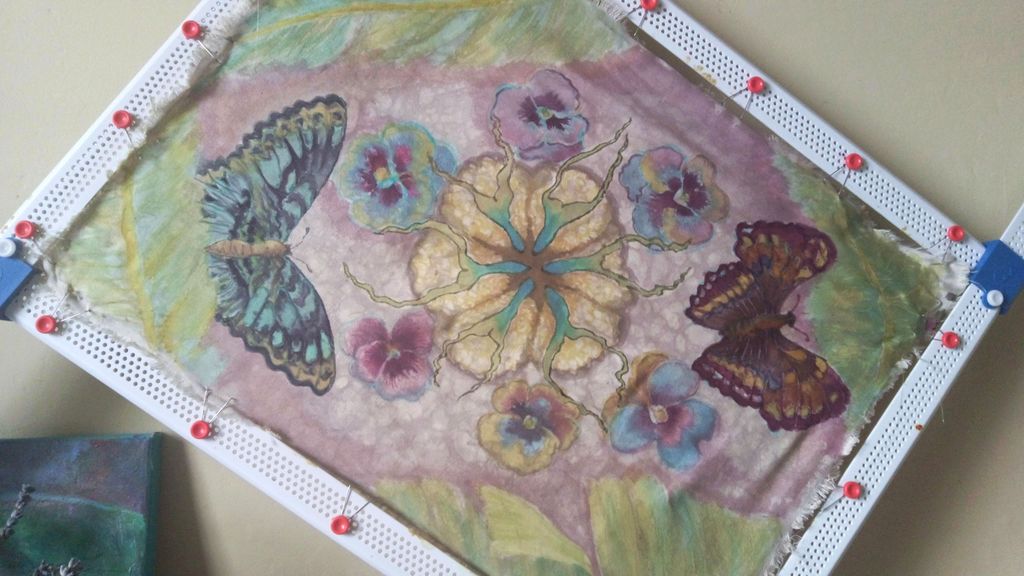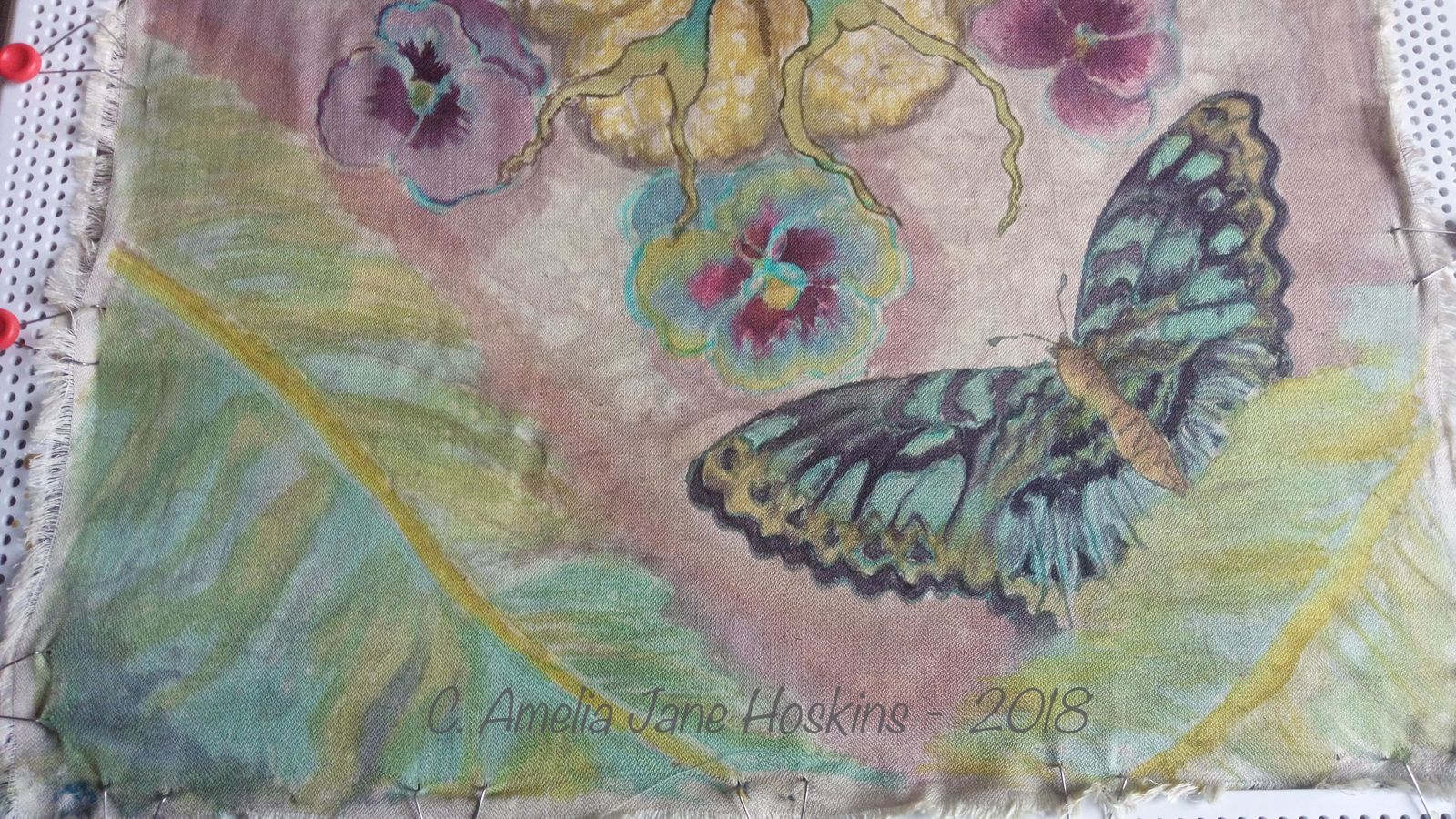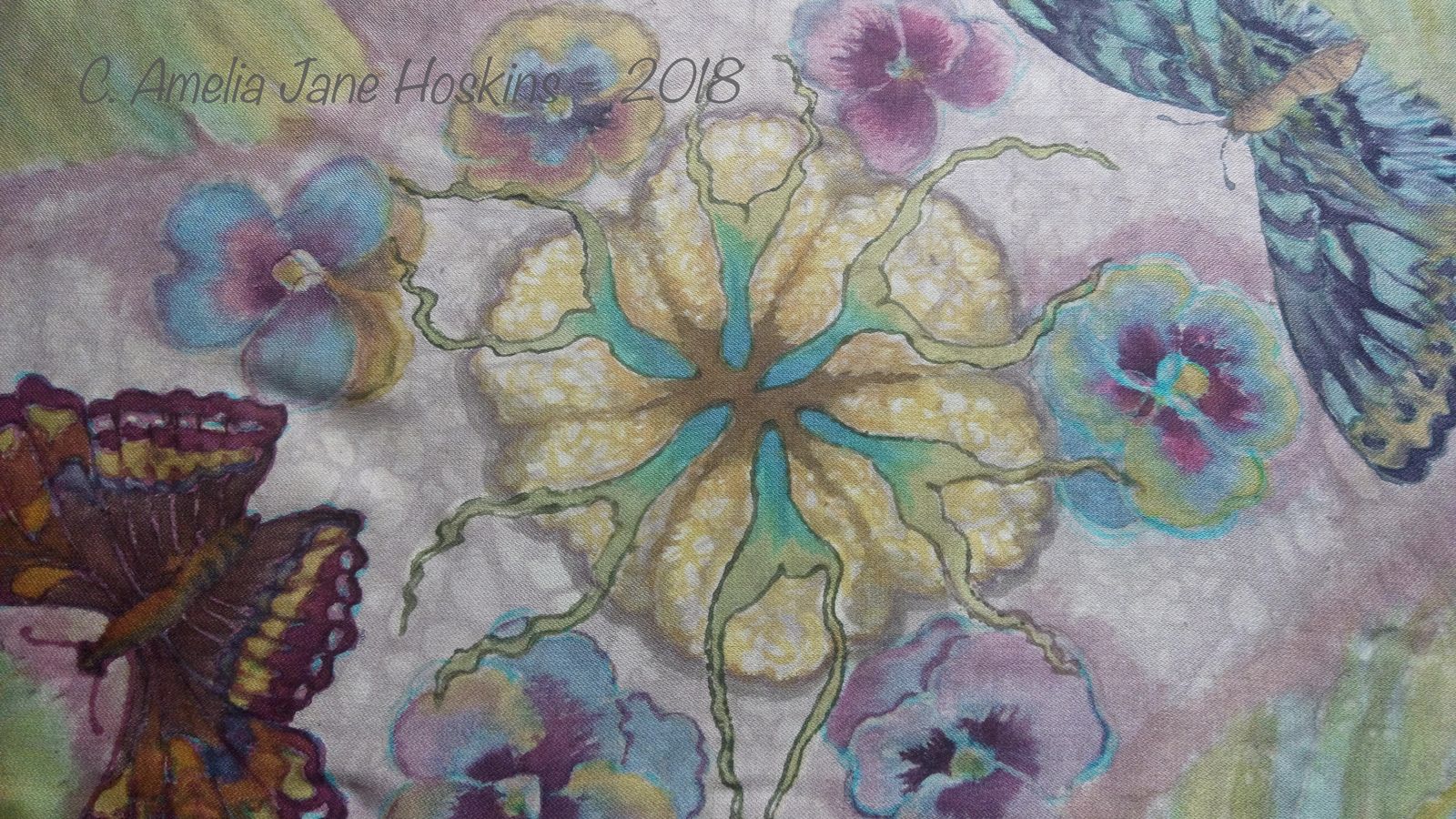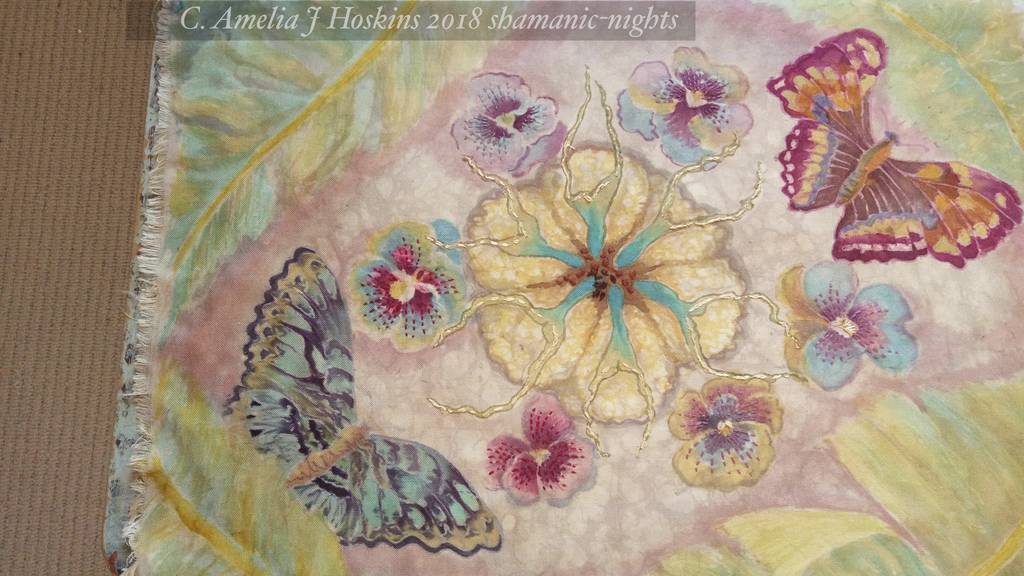Experimental shibori and batik on Logwood dyed silk - 1st Trial
Logwood (in bought dried form) was found to easily produce a very deep violet dye on Ahimsa silk. Note: Less dye stuff would produce lilac and mauves. Shibori stitching outlining butterfly showed clearly in white where dye penetration was resisted.
Batik wax originally painted on the silk was overcome by dye, remaining strong aubergine. To create a contrast to bring out shapes, I outlined in transparent gutta the shapes intended in the design (to be coloured). I used craft 'fabric bleach' to brush on some areas, such as banana leaves. A second steaming produced the intended shapes in a lighter aubergine, which would be interesting to explore further.
Colour added to simple images copied from a textile, as experiment. This piece was unfortunately burnt in steaming (water pot went dry), and was cut into strips and used in another garment.
__________________________________________________
2nd Batik Experiment
Double stitched outlines of images, as shibori test. Batik wax painted quite heavily onto ahimsa silk, with daubing stiff paint brush, to create a cellular texture. The shibori threads were pulled tight before dying. Washing out, the wax had held. Ironed over wax several times with strong brown paper to absorb wax, then rubbing off the bees wax in warm soapy water. Texture remained to start painting on.
2nd Trial result produced a pleasant textured background to overpaint on. Fabrics were chosen to coordinate, and use as a colour guide.
Rectangular design was a simple test with the batik, creating a usable textured background to over painting with brighter colours. This rectangle was used in a dress Butterflies and Pansies panel front. Flowers were also embroidered.


